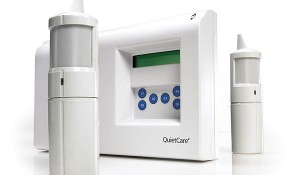 By Neil Versel
By Neil Versel
Last week, Intel and GE Healthcare formally launched Care Innovations, their joint venture to promote the telehealth technologies of both companies and develop new products intended to help the elderly and chronically ill live independently.
Leading Care Innovations as CEO is Louis Burns, formerly the general manager of Intel’s Digital Health Group. In an interview with MobiHealthNews, Burns discusses the genesis of the Folsom, Calif.-based venture, the new company’s plans and the challenges ahead.
As previously reported, Care Innovations brings together Intel’s Digital Health Group and the Home Health Division of GE Healthcare. The two companies formed a strategic alliance last April and announced the joint venture in August, drawing on talent from both organizations.
According to Burns, Care Innovations can trace its roots to a 2008 phone conversation between Intel President and CEO Paul Otellini and General Electric Chairman and CEO Jeff Immelt, shortly after the launch of the Intel Health Guide home monitoring system. From that call, the two companies started exploring a partnership.
“We found a common view of the market,” Burns says, and found “almost zero overlap” between what GE and Intel were doing in mobile and wireless health. “It just started to make a whole hell of a lot of sense, to put it bluntly.”
In April 2010, when GE and Intel announced the partnership that eventually morphed into Care Innovations, the two companies committed a total of $250 million to R&D in telehealth and home monitoring over a five-year period. However, Burns would not comment on how much money the two companies will invest in the venture. “I can tell you that we are strongly committed to this,” he says.
Merging the two operations brought together two distinct corporate cultures. General Electric is an old-line conglomerate from the East Coast—and GE Healthcare is based in the Midwest—while Intel is a Silicon Valley innovator, albeit a large, well-established one. Plus, GE has a long history in healthcare, while Intel is relatively new to the industry. “Frankly, [culture] was one of the things we were worried about,” Burns says.
But it turned out the two companies had more in common than Burns originally thought. “Both companies have a deep tradition of innovation,” Burns says. Both health teams bring a lot of “passion” to the effort. Other common strengths include corporate discipline and a “deep commitment to customers,” according to Burns.
Care Innovations will market existing GE and Intel telehealth and remote monitoring products, including Intel Health Guide, Intel Reader, which converts text to speech, and GE QuietCare, a motion-sensing system that GE acquired when it purchased Living Independently Group in late 2009. It also will continue extensive market research efforts in hopes of convincing potential customers that remote monitoring saves lives and money.
Eric Dishman, formerly the head of health innovation and policy at Intel and now director of health policy for Care Innovations, has led extensive ethnographic research on aging in place and fall prevention in Ireland, and much of that informed development of Health Guide. “That human interface was designed for people who haven’t used any kind of technology,” Burns says.
“The work that Eric and Eric’s team is doing will continue,” Burns adds.
Last week, after Care Innovations said it would focus on products, MobiHealthNews called out Dishman for his talk at TEDMED 2009, in which he argued that home health needs a better understanding of the psychological and behavioral needs of aging patients more than it needs new technology. On this point, Burns says he wants Care Innovations to be able to offer both products and services to help customers optimize workflow and integrate the products into those workflows. “The marketplace is asking for more full-service products,” he says.
While Care Innovations hopes its research will spur policy changes by payers, Burns says this is not the company’s sole strategy. “The success or failure of Care Innovations is not based on reimbursement,” he said. The products Intel and GE bring to Care Innovations are widely available overseas, where national health systems both pay for and benefit from such devices.
In the U.S., some changes brought about by the Patient Protection and Affordable Care Act and other Medicare policy adjustments are already shifting the landscape. CMS soon will no longer pay hospitals for readmissions within 30 days, so it makes sense for health systems to invest in home monitoring to prevent readmissions. “You get a better outcome,” Burns notes, “And it’s good for the [hospital’s] financial bottom line.”
For these reasons, technology like Care Innovations is selling “makes perfect sense” for payers and health systems, Burns says. Other target markets include employers and school systems.
The advent of accountable care organizations will have an effect on this industry, too. “Dealing with a patient in their home is going to be a critical part of ACOs being successful,” Burns says.















